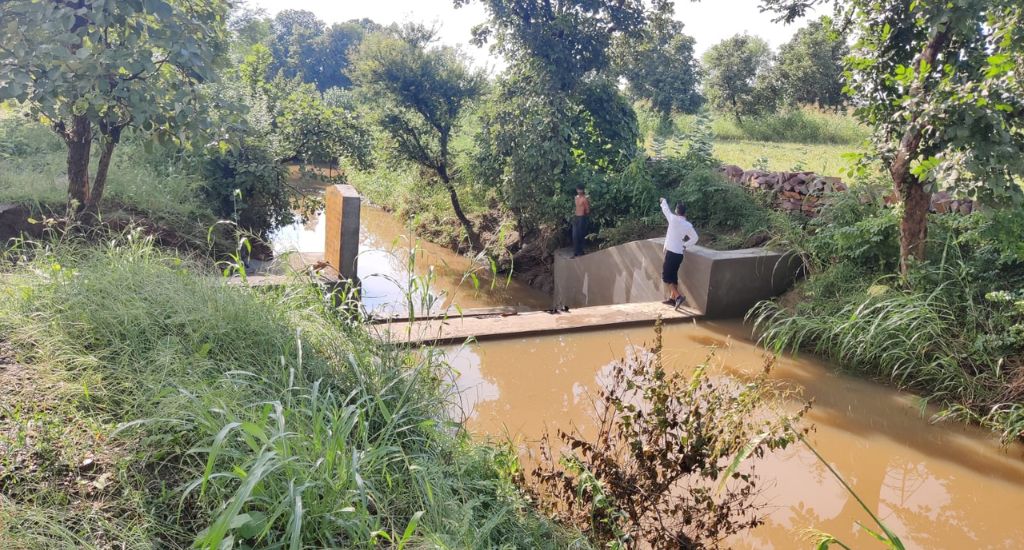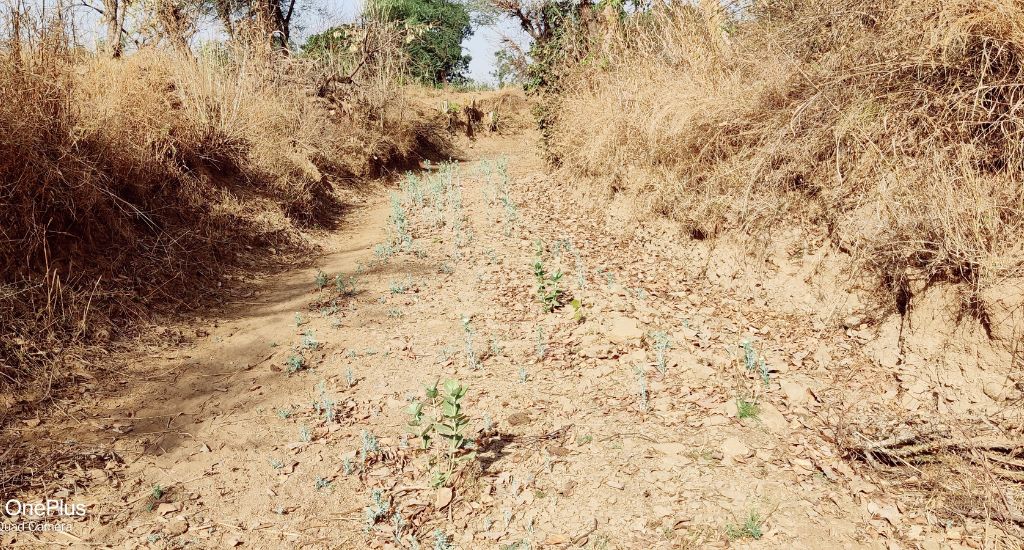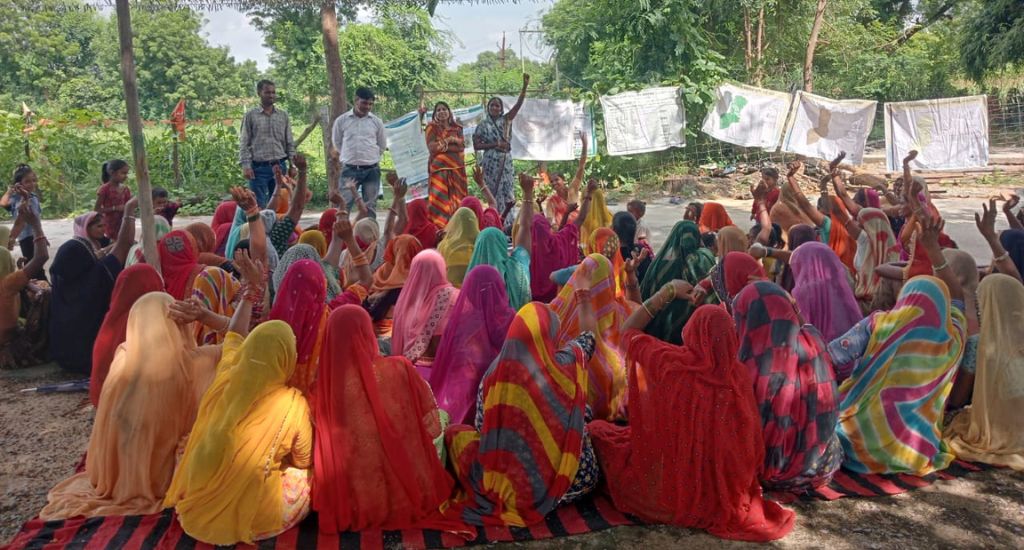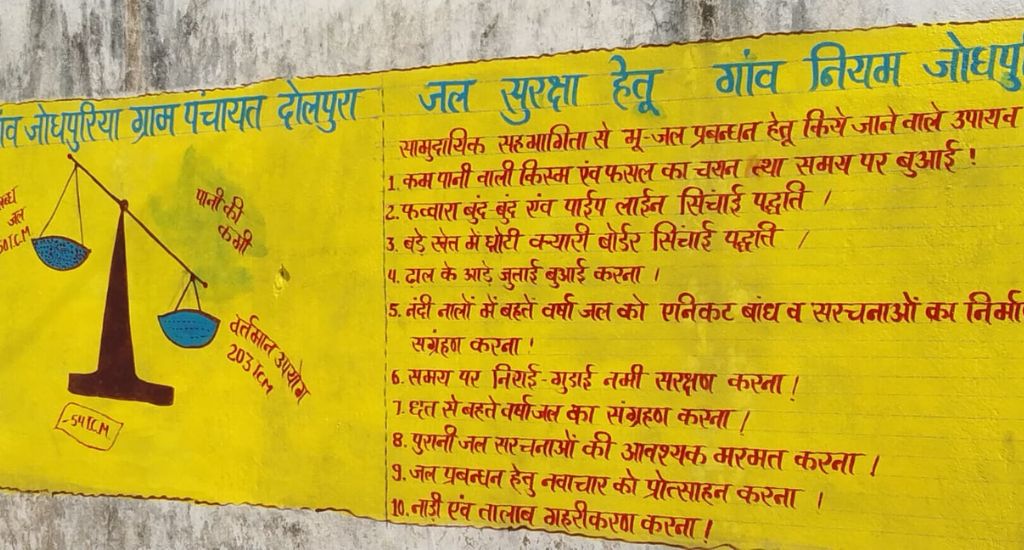
Drop of change: Rajasthan village’s inspiring water resurgence
The people of Jodhpuriya, a village in Rajasthan that always faced water woes, come together, to revive their check dam and create rules for sustained water security.

The people of Jodhpuriya, a village in Rajasthan that always faced water woes, come together, to revive their check dam and create rules for sustained water security.
The residents of Jodhpuriya village in Bhilwara district of Rajasthan still remember the time when they grappled with water scarcity and how it impacted their agro-pastoral livelihood. But now the village is an example of the potency of community-led initiatives in revitalising water resources.
With the use of technology and institutional support, the community has managed to enhance groundwater levels, alter crop patterns, increase income and thus reduce migration.
Jodhpuriya, which lies in Dolpura panchayat of Mandalgarh administrative block, is a semi-arid landscape prone to water scarcity. With an annual rainfall of 645 mm, this village is home to 50 families belonging to the Bhil, Rajput, Gurjar and Rebari communities. Most of them are small and marginal farmers.
More than 90 percent of the villagers rely largely on goat rearing. With 800 small ruminants like sheep and goats and 200 large cattle including cows and buffaloes, the village thrives on the vitality of its livestock.

Jodhpuriya’s groundwater deficiency, recorded at -54 thousand cubic meters (TCM) in 2021, cast a looming shadow on the villagers and their livelihoods. Absence of formal institutional and structured bylaws for water usage compounded the issue.
The village had no structures for harvesting water or conservation of soil moisture. The villagers could grow crops only in the kharif season, making rabi crop cultivation impossible. Livestock grazed on common lands, creating a delicate balance between sustenance and scarcity.
In 2021, the Foundation for Ecological Security (FES), with the support of Axis Bank Foundation, launched the ‘Rejuvenating Water Commons’ programme here in collaboration with the local community.
Also Read: Rainwater Harvesting: How a parched village catches rain to prosper
FES started working in Jodhpuriya after assessing the extreme paucity of water resources. The team carried out water security assessments and crop water budgeting, and conveyed the results to the community using data and visuals to explain the ways of revitalising water resources.
It was decided to revitalise water commons. using advanced technology like Composite Landscape Assessment and Restoration Tool (CLART), Crop Water Budgeting (CWM) and Groundwater Monitoring Tool (GWMT).
The implementing team engaged actively with the local self-help group (SHG) through training programmes, women’s meetings and exposure visits. The community resource persons of FES provided technical support for these exercises. Convergence with Mahatma Gandhi National Rural Employment Guarantee Scheme (MGNREGS) and social security schemes using GIS Enabled Entitlement Tracking System (GEET) also helped in implementing the programme.

A village institution (VI) was established with a management committee of 11 members, who were trained in maintaining bank accounts, and handling records and payments. They went on exposure visits to Barundni and Dhamanghatti in Barundni panchayat, which have active management committees. The planning initiatives were also extended to ward sabhas.
The village institution built a rapport with the panchayat and received a no-objection certificate for constructing an anicut. A resolution was passed in the village institution meeting for the construction of the check dam.
The anicut has a catchment area of 110 hectares. It was constructed by engaging 90 non-skilled workers and 50 skilled workers from the village itself. They were compensated for their work, with Rs 1 lakh approximately.
Also Read: Cost-effective jalkunds help Manipur’s farmers tide over water woes
The communities took a proactive step to protect the water commons by drafting bylaws such as prohibiting the cutting of trees near the anicut. Additionally, the community suggested using wall paintings as a means to make information easily accessible to everyone.
Certain farmer groups then began selecting crops that required less water but could be sold at higher prices. It showcased their sustainable approach towards agriculture. The village institution passed resolutions on repair of water harvesting structures. It also shared reflections in the ward sabha and gram sabha in accordance with the village’s collective rules.
In a concerted effort to uplift the livelihoods of the agro-pastoral community, impoverished families were provided with agricultural tools. Additionally, 20 goat floors were constructed and two chicken coops were distributed.

The entire journey, from the initial discussion to concrete on-the-ground actions, was meticulously documented in the form of resolutions, serving as tangible evidence of the comprehensive and transformative impact of the intervention.
Today, the groundwater level in Jodhpuriya has risen by about 5 metres. The summertime water level improved significantly from 27-30 metres to a more reliable range of 18-19 metres, ensuring better water availability for irrigation. One of the most visually evident outcomes has been the shift in the villagers’ traditional crop patterns.
Also Read: Khejri – the wonder tree of Thar desert
Black lentils and maize were traditionally the main crops grown during the kharif season. However, there has been a shift, and groundnuts are now being cultivated alongside maize and a few other crops.
Livestock, a vital component of the village’s livelihood, enjoys increased water availability. Additionally, household incomes among small and marginal farmers have increased. Local conditions and livelihood opportunities have improved sufficiently, retaining the community within its roots, and reducing the need for migration.
Taking into account the benefits of the constructed anicut, the panchayat also undertook the construction of a few additional anicuts.
There is an improvement in vegetation around the catchment areas and the anicut. Soil erosion has been curbed, which has reduced water and soil runoff. Reduction in nutrient runoff has resulted in improved soil quality.
Overall, the community has become more resilient to drought conditions. It is contributing to the ecological health of the region.
In a span of three years, Jodhpuriya has seen remarkable transformation. It’s a testament to the power of community-led interventions in rejuvenating water commons, transforming landscapes and exemplifying its potential in sustainable development.
Also Read: Restored farm ponds help Sahariyas tide over drought
The lead image shows the post-intervention catchment and vegetation by the village anicut in September 2022. (Photo by Phorulal Dhakad)
Harshal Mankar is an Assistant Project Manager at the Foundation for Ecological Security (FES) in Rajasthan.